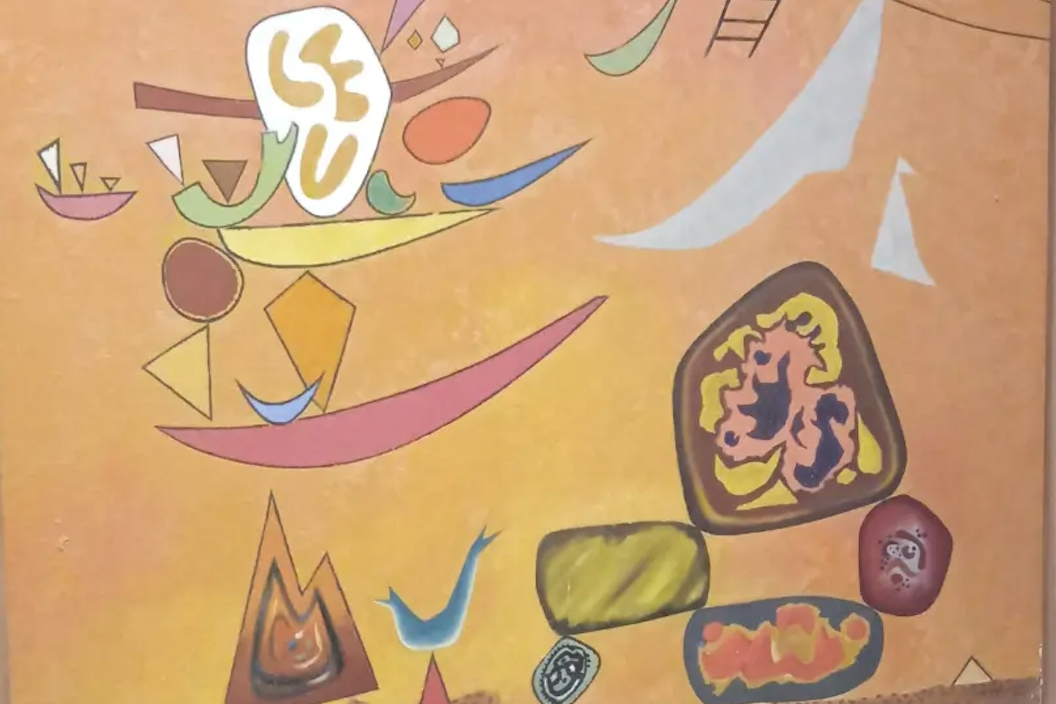From third century B.C. Syracuse, Sicily, the long and winding journey of the oldest surviving copy of Archimedes’ treatises ended up in twenty-first century California.
There are only a few days left to visit the exhibition “Lost and Found: The Secrets of Archimedes”, on view at The Huntington Library Art Collections and Botanical Gardens, Mary Lou and George Boone Gallery, until June 22, 2014.
The exhibition showcases twenty leaves from the so-called “Archimedes Palimpsest”, on loan from the Walters Art Museum in Baltimore, along with other manuscripts and related objects from the Huntington’s collection and from UCLA used to help read the precious document, and videos that illustrate the complicated conservation and imaging process.
Forgery of a medieval illustration of St. John in the Archimedes Palimpsest. Copyright the owner of the Archimedes Palimpsest, licensed for use under creative Commons Attribution 3.0 Unported Access Rights
Forgery of a medieval illustration of St. John in the Archimedes Palimpsest. Copyright the owner of the Archimedes Palimpsest, licensed for use under creative Commons Attribution 3.0 Unported Access Rights
The fascinating story of the manuscript dates back to tenth century Constantinople (Istanbul), where an anonymous scribe copied Archimedes’ mathematical treatises in original Greek onto parchment. Three hundred years later, a Greek monk “recycled” the priceless document to make use of the paper, at that time hard to come by, and erased Archimedes’ text to create an Orthodox prayer book.
It was only in the late 1800s that scholar Johan Ludvig Heiberg discovered Archimedes’ writing underneath the prayers, transcribed as much of the text as possible, and wisely took some photographs that helped future investigation and interpretation. Afterwards, the palimpsest disappeared for decades, a few leaves were lost, and medieval illustrations were painted on some of the pages.
In 1998, the mysterious book was purchased by a private collector from Christie’s auction house in New York, and loaned to the Walters Art Museum in Baltimore for conservation, digital imaging, and transcription. For 12 years, 80 scientists, scholars, and conservators worked on the text “which was extremely fragile and damaged by time, weather, travel, and manipulation, and needed to be disassembled and stabilized before any imaging could be performed,” explained Project Director Will Noel in a 2011 news release.
High-tech equipment was employed to reveal Archimedes’ writing hidden beneath the religious text and paintings. It consists of a previously unknown treatise entitled “The Method of Mechanical Theorems”, focusing on the use of infinitesimals to determine area or volume; the only surviving copy in Greek of his work “On Floating Bodies” and other texts; and his mathematical puzzle known as “Stomachion”, which may be the earliest example of combinatorics at the base of modern computing.
According to Noel, if the manuscripts had not been palimpsested into the prayer book, they might have never survived until today, which makes this one of the most important discoveries of our time in the field of science. Instead of eclipsing Archimedes’ genius, the intervention of the Orthodox monk actually helped to preserve it.
These findings reaffirm the historical importance of the classical mathematician, physicist, engineer, inventor, and astronomer, who discovered the principle of Specific Gravity (different things have different densities relative to water), and the Law of the Lever (magnitudes are in equilibrium at distances reciprocally proportional to their weights).
His scientific “tricks” were also employed to defend the city of Syracuse during the Roman siege in 212 B.C., when he was killed, and he is considered to be the predecessor of other great scientists such as Galileo Galilei, Isaac Newton, and Albert Einstein.





























